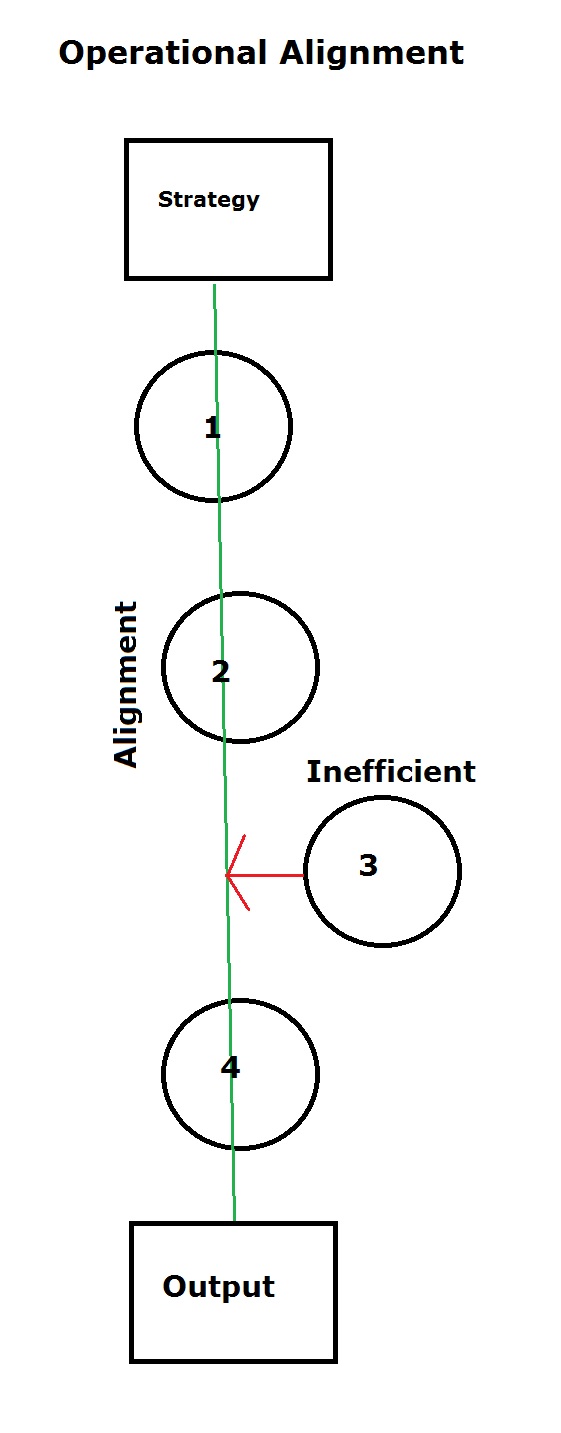Organizations seek to create market
advantages and higher levels performance. While executives try and make a
market impact it is the investors who desire to obtain stock value increases.
Spending fewer resources while creating efficiencies raises the value of both
the organization and its stock price. Improvements in organizational efficiency
can be found through the proper implementation of strategy and the alignment of
all the parts. Synergy is created through both management and employee
participation.
Configuration theory posits that
each company has certain characteristics based upon their strategic objectives
and that through configuration of these characteristic elements a higher yield
of performance can be found (Van de Ven and Drazin, 1985). Efficiency is found
through aligning various departments, specialties and resources in order to
create less transactional waste and additional focus on objectives.
Unfortunately, organizations often fail to create this synergy because they cannot
adequately implement their strategies and ensure all departments and people
follow suit.
Efficiency is often difficult for
people to materialize for concrete conceptual understandings or the ability to
effectively utilize such understandings for higher levels of performance. Effectiveness
can be seen as a ratio of the amount of organizational resource used to achieve
outcomes (Bonama and Clark, 1988). In essence, organizations that can impact
their environment using fewer resources than their competitors are more
efficient. They spend less money and used fewer resources not only in their
daily operations but also in their strategic successes.
Not all organizations are the same when it comes to
their ability to produce positive results. For effectiveness, the configuration
of structural processes and individual tasks must be aligned to develop
effective implementation of business strategy that leads to superior marketing
effectiveness (Day, 1997). In other words, each individual activity either
contributes to or takes away for market competitiveness.
Strong executives should understand all the pieces
to that are parts of the strategic implementation. Analyzing each of these
parts for their contributory impact is beneficial. Parts that are either too
expensive or do not contribute effectively should be removed or adjusted when
appropriate. A total cost analysis can be completed to determine the overall efficiency
of the operation.
Workers can also be part of the solution. Even
though they may not have a great understanding of the strategic outlay they
have higher levels of in-depth knowledge with their individual jobs. This means
that they can perceive small adjustments to create innovation and efficiency.
Management must only be able to listen, encourage, and analyze the suggestions.
Many small adjustments can add up to compounded savings over time.
The end result is a stronger organization that
efficiently meets the needs of customers and thereby creates higher levels of
customer loyalty. According to Srivastava, Fahey, & Christenson (2011),
“these relational assets are based on factors such as trust and reputation, the
potential exists for any organization to develop intimate relations with
customers to the point that they may be relatively rare and difficult for
rivals to replicate” (p. 779). It is through this alignment that unique
business practices can contribute to organization successes.
Author: Murad Abel
Bonoma, T., & Clark, B. (1988). Marketing Performance Assessment.Cambridge.
MA: Harvard Business School Press.
Day. (1997). Aligning the
Organization to the Market. In Reflections on the Futures Marketing, R. Donald,
L. Lehmann, & E. Katherine, (Eds.), Massachusetts: Marketing Science
Institute.
Srivastava, R., Fahey, L., &
Christensen, H.K. (2001). The resource based view and marketing: The role of Market
based assets in gaining competitive advantage. Journal of Management, 27, (6).
Van de Ven, A. & Drazin, R.
(1985). The Concept of Fit in Contingency Theory: Research in Organizational Behavior,
7(1).

No comments:
Post a Comment